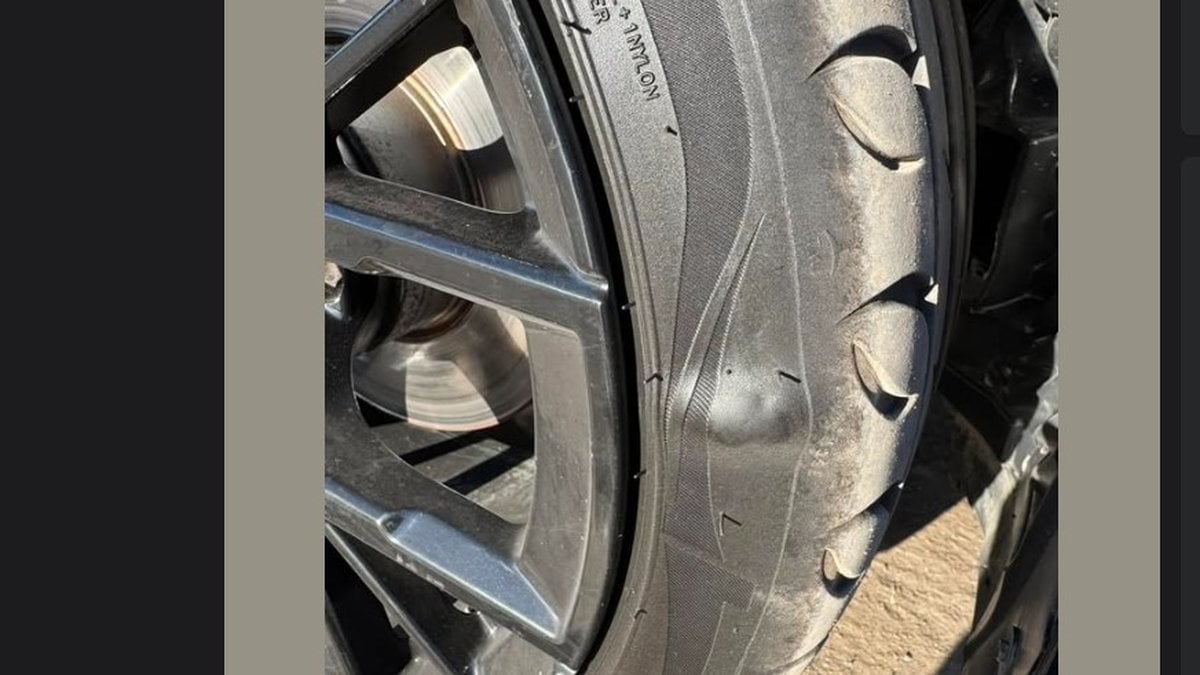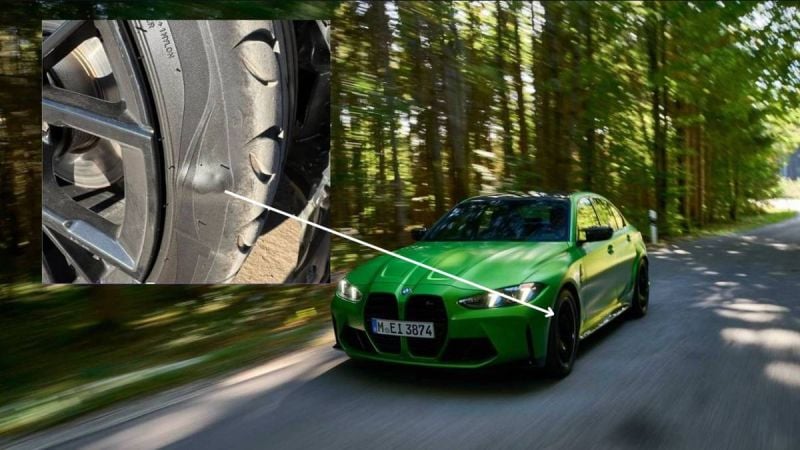It always starts the same way, keys freshly exchanged at the dealer, the smell still clinging to the upholstery, and that first drive home feeling like a personal victory lap. Then reality hits, sometimes literally. A recent post from a proud new BMW 420i xDrive owner reads,
"Hey guys, proud new owner of a 420 xDrive, on the way home this small bubble appeared, do I have to change the whole tire or I can ride it out until I have to get new ones, would appreciate some advise."
There it is, a post as unsettling as it is familiar. A new to you BMW, still warm from the dealer lot, and already a sidewall bubble has shown its ugly little face. What follows is a question that’s all too common in car forums, yet always disconcerting: Can I ride it out? And the answer, delivered with the kind of finality that shouldn’t require elaboration, is absolutely not. That “small bubble” is a silent warning, a structural time bomb masquerading as a minor blemish. If you're still on the fence, let me put it plainly: that tire is done. Full stop.
Why Your Car’s Contact Patch Matters
Let’s pause for a moment and remember something that every car enthusiast, every driver, should be taught before they get their license: your tires are the only contact your car makes with the road. Not your trick all-wheel drive system, not your torque vectoring, not your traction control wizardry. Just four patches of rubber, each roughly the size of a postcard, separating thousands of pounds of metal and momentum from concrete, asphalt, and chaos. Every corner you take, every panic stop you make, every highway merge at 70 mph, it all rests on the integrity of those tires. That bubble means that integrity is gone.

The Science Behind High-Performance Rubber
The science behind tires is staggering. Layers of steel belts, polyester cords, and complex rubber compounds, all tensioned and balanced to handle lateral load, vertical load, centrifugal force, and heat. Tire engineers don’t sleep much for a reason, failure isn’t a possibility; it’s an inevitability if something goes wrong. In extreme cases, like Bugatti’s Veyron or Chiron, the tires are not just engineered, they're glued to the wheels to prevent slippage at speeds over 250 mph. Yes, glued. Not to impress investors or boost margins, but to make sure that 1,500 horsepower doesn’t turn into 1,500 pieces of carbon fiber shrapnel.
Dealership Tire Service vs. Independent Options
- BMW equips nearly all its vehicles with run-flat tires, aiming to enhance safety by allowing drivers to continue driving for a limited distance after a puncture, thereby reducing the immediate need for roadside tire changes.
- OEM tires are specifically designed and tuned for each model to optimize handling, ride comfort, and overall performance, ensuring a driving experience that aligns with the brand's standards.
- Purchasing tires directly from BMW dealerships ensures compatibility and maintains vehicle performance. However, it's important to note that dealership services may come at a higher cost compared to specialized tire shops, which can offer competitive pricing and immediate service.
Now, let’s talk about that bubble. What you’re seeing is a sidewall delamination, usually from impact damage, pothole hits, curb strikes, or sometimes a manufacturing defect. It’s not just air trapped under the rubber. It’s an internal wound, a structural divorce between layers that were never meant to separate. That tire is no longer safe for any kind of high-speed driving. Think of it as a worn-out ligament on a marathon runner, it might hold for a few more steps, or it might fail mid-stride, sending everything crashing down in spectacular fashion. Do you want to risk that on the interstate?
Risks of Driving on Damaged Rubber
Driving with a compromised tire isn’t just a personal risk, it’s a threat to everyone sharing the road with you. That bubble might survive a trip to the grocery store. But hit a highway expansion joint at speed, or take an emergency lane change a little too hot, and that tire might give out faster than a first-generation SMG gearbox. The result isn’t just a flat. It could be a catastrophic loss of control, a multi-car pileup, or worse.
Why Cutting Corners Can Cost Lives
This isn’t alarmist rhetoric, it’s fundamental physics. Motorsports engineers build entire cars around tire capabilities. Track specials like the McLaren Senna, Porsche GT3 RS, or Ferrari SF90 aren’t just performance monsters because of their engines; they’re the result of tire science pushed to the brink. The compound, the heat cycle, the sidewall stiffness, all are engineered for control, safety, and repeatability. And yet, here we are, debating whether a visible structural failure can be ignored until the next tire sale.
So let’s settle it here and now: no, you don’t “ride it out.” You don’t gamble with a ticking time bomb just because the tread looks fine. Replace the tire. Today. Don’t wait for a tire shop’s blessing. Don’t wait for a blowout to convince you. Your life, and the lives of the people around you, depends on four contact patches. Respect them, or you’ll learn the hard way why the margin for error is as thin as a bubble in your sidewall.
Because here’s the cold, steel truth. The four contact patches, each no bigger than a sheet of printer paper, are the only things standing between you and a violent meeting with the guardrail, a ditch, or worse. It doesn’t matter if your car has lane-keeping assist, 37 airbags, traction control that sounds like it came from a fighter jet, or a five-star crash rating. If your tires can’t grip, if they’re cracked, worn, underinflated, or heat-cycled into oblivion, all that technology is as useless as a parachute on a submarine.
Your tires are the final, non-negotiable surface between you and the road, the first and last line of defense when things go sideways, literally. That thin strip of rubber has to manage acceleration, braking, cornering, weight transfer, pothole strikes, heat cycles, road imperfections, and every ounce of chaos the real world throws at you at highway speeds. And when physics decides it’s time to cash in your chips, it won’t care how clean your tread looks. It will punish you, swiftly and without mercy.
Noah Washington is an automotive journalist based in Atlanta, Georgia. He enjoys covering the latest news in the automotive industry and conducting reviews on the latest cars. He has been in the automotive industry since 15 years old and has been featured in prominent automotive news sites. You can reach him on X and LinkedIn for tips and to follow his automotive coverage.














Comments
Would you replace the tire…
Permalink
Would you replace the tire or risk it?